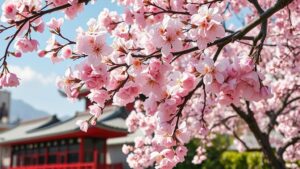Discovering the spectacular beauty of frost flowers in Arctic conditions.
Discovering the Spectacular Beauty of Frost Flowers in Arctic Conditions
Frost flowers are a stunning natural phenomenon found in the Arctic and sub-Arctic regions. They emerge under specific climatic conditions, transforming the frozen landscape into a dazzling display of intricate ice formations that resemble delicate blooms. This article delves into what frost flowers are, how they form, when and where to see them, and their ecological significance.
What Are Frost Flowers?
Frost flowers are thin, lace-like ice structures that appear on the surface of thin ice or frozen ground during certain meteorological conditions. are formed through a process of capillary action, where moisture from the underlying surface rises through cracks or openings in the ice and subsequently freezes in the frigid air.
These formations can vary in appearance, often resembling petals or delicate ribbons. The intricate patterns of frost flowers can measure a few centimeters to several inches across. Their beauty lies in the fine details that reflect light, creating a glittering effect against the stark, cold backdrop of Arctic environments.
Formation Conditions
The formation of frost flowers requires a unique set of conditions:
- Cold Temperatures: Typically, temperatures need to be below -10°C (14°F) for frost flowers to develop.
- Thin Ice: Frost flowers usually form on newly created thin ice, less than 1 inch thick, over lakes or ponds.
- Humidity: High humidity levels are essential, as they provide the moisture needed for the phenomenon.
- Calm Winds: Windless or low-wind conditions help maintain the delicate structures once they form.
When and Where to See Frost Flowers
Typically, frost flowers appear in late fall and early winter, particularly from late October to early December. conditions must be just right, making chances of witnessing this phenomenon relatively rare. Locations renowned for frost flowers include:
- Arctic National Wildlife Refuge, Alaska: Known for its diverse ecosystems, the refuge provides a pristine environment for frost flowers.
- Lake Superior, Michigan: The cold waters of this great lake often create ideal settings for frost flower formation.
- Yellowknife, Northwest Territories, Canada: Situated in a sub-Arctic environment, Yellowknife experiences the perfect conditions in late fall.
Ecological Significance of Frost Flowers
While frost flowers are visually captivating, they also play a crucial ecological role. They contribute to the local moisture dynamics by allowing water vapor to escape into the atmosphere, influencing weather patterns. Also, frost flowers are a temporary habitat for microorganisms, which can benefit from the transient moisture they provide during the harsh winter months.
Photography Tips for Capturing Frost Flowers
For photographers eager to capture the ephemeral beauty of frost flowers, here are some tips:
- Timing: Go out at dawn, when the light is soft, and moisture often accentuates the flowers shapes.
- Macro Lens: Use a macro lens to capture the intricate details of the flowers, enhancing the visual impact.
- Tripod: A tripod will stabilize your camera, especially in low-light conditions.
Conclusion: Embracing the Arctic’s Wonders
Frost flowers are a breathtaking example of natures artistry, combining scientific processes with aesthetic wonder. Observing these delicate ice formations is akin to witnessing a rare celestial event–both fleeting and magical. For adventurers and nature enthusiasts, seeking out frost flowers in the Arctic conditions offers a profound connection to the beauty and complexity of our planets ecosystems. Whether you are photographing them or simply enjoying their ephemeral charm, frost flowers remind us of the intricate ways nature expresses itself.



